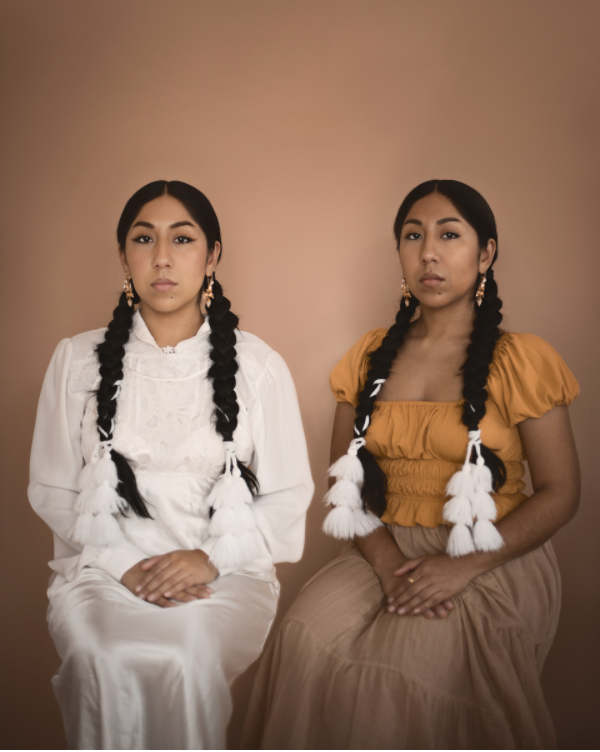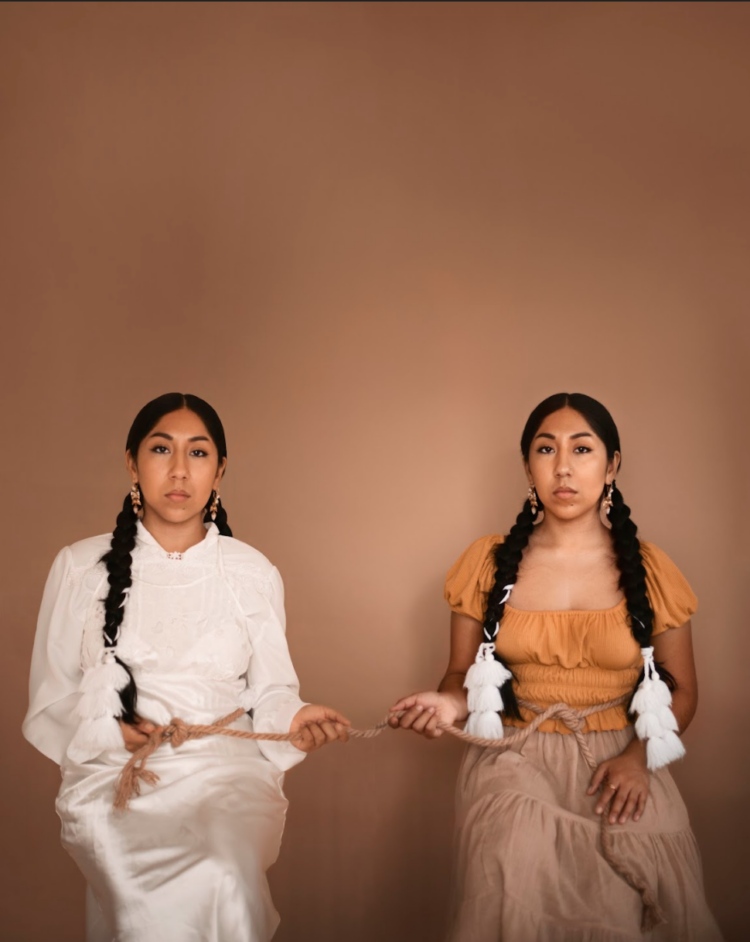Sherman Fairchild Intern Oscar Flores-Montero speaks with Juried Invitational Inside Outside, Upside Down artist Carol Antezana about her practice. The Phillips Collection is proud to announce the acquisition of her work, Las Gringas.

Carol Antezana, Las Gringas, 2021, Digital photographic print, 20 x 16 in., Courtesy of the artist
Oscar Flores-Montero: When did you first pick up a camera? How did you know being a photographer was a practice you wanted to pursue?
Carol Antezana: I grew up very shy and soft spoken as a child but thrived on expressing my creativity through drawing, painting, and sculpting with play dough. I had a lot of support from all my art teachers growing up that encouraged me to be involved in all the art clubs and sign up for art classes. I was recommended to take a photography class in high school and I fell in love with it—especially working in the darkroom. I would have never even thought that I could pursue the arts into further education if it wasn’t for my photography teacher who helped me through the process and even talked to my parents about this being a great decision. Like other immigrant families I was expected to pursue a straightforward and stable career after high school. I had the blessings and opportunities my parents didn’t have growing up in Bolivia; I had the option of getting an education. My dad would always tell me that I had to go to school and study so I didn’t have to work so hard doing physically exhausting jobs like he did. I knew that going to art school would be hard and I was going into a field that wasn’t the stability my parents wanted for me, but I wanted to pursue what I was passionate about. I made the choice to follow my heart.

Photo from Las Gringas series, Courtesy of the artist
OFM: Self-portraiture is present in a lot of your work. Can you talk about this choice? Why self-portraiture?
CA: The need for self-portraiture came about as a necessity while I was in art school. It was really hard to coordinate a time with my colleagues to be my subject matter for my photo assignments while being a full-time student with a full-time job, so I started photographing myself. I found it easier to do it all myself than to ask for help or direct other people. I ended up liking the process. I liked that I was able to take on all the roles for my own photoshoots like being my own model, creative director, stylist, and personal assistant. I enjoy shooting alone. I get the time to focus and think about work I am making.
OFM: What inspired the Las Gringas series?
CA: It actually was conceived after the 2019 political crisis in Bolivia that made me start to ask questions, research, and try to understand why there were such strong opposing views in my family. The different upbringings from the city of Cochabamba and the rural countryside of Abierto have shaped their views on a particular topic of interest—the indigenous revolution. I had always been aware of racism here in America, but It had just clicked in my brain that there are deeply rooted racial double standards in both countries. As a first generation American I had to be American enough and speak perfect English, and I had to be Bolivian enough and be fluent in Spanish. Why was I teased by my family for not speaking Spanish right as a child? Spanish isn’t even the native language in Bolivia. Why did no one bother to teach me Quechua (one of the many native languages in South America)? I started asking myself a lot of questions. Who was I? Soy India o gringa? European colonization has left deep wounds in my family. I am just on my path of discovering my ancestral roots. My process of making work usually starts with some sort of difficulty in my life and then I am able to use photography as a form of self therapy. Shooting self-portraiture creates a safe place where I can be vulnerable without the fear of judgment from others—or myself.

Photo from Las Gringas series, Courtesy of the artist
OFM: What’s on the horizon for you in your work and practice?
CA: Having the tools to make work is important so I’m applying to residencies and grants to be able to develop new bodies of work. The goal is to someday have my own studio space to make personal work and a place to shoot clients!
OFM: Did the pandemic affect your approach to creating art? If so, how?
CA: The pandemic was a really scary time and affected everyone in different ways. At the start of the pandemic and when everything was on shut down I was too overwhelmed to do anything creative. While we were all in shutdown my artmaking stopped as well. I needed time to process everything. My process of making work usually starts with some sort of difficulty in my life and I either use art as a way to distract my mind or confront and use photography as a form of self-therapy. I’m not sure the pandemic has changed my approach to creating art, but it has taught me it’s okay to just live life. Self-care is not self-indulgence.
